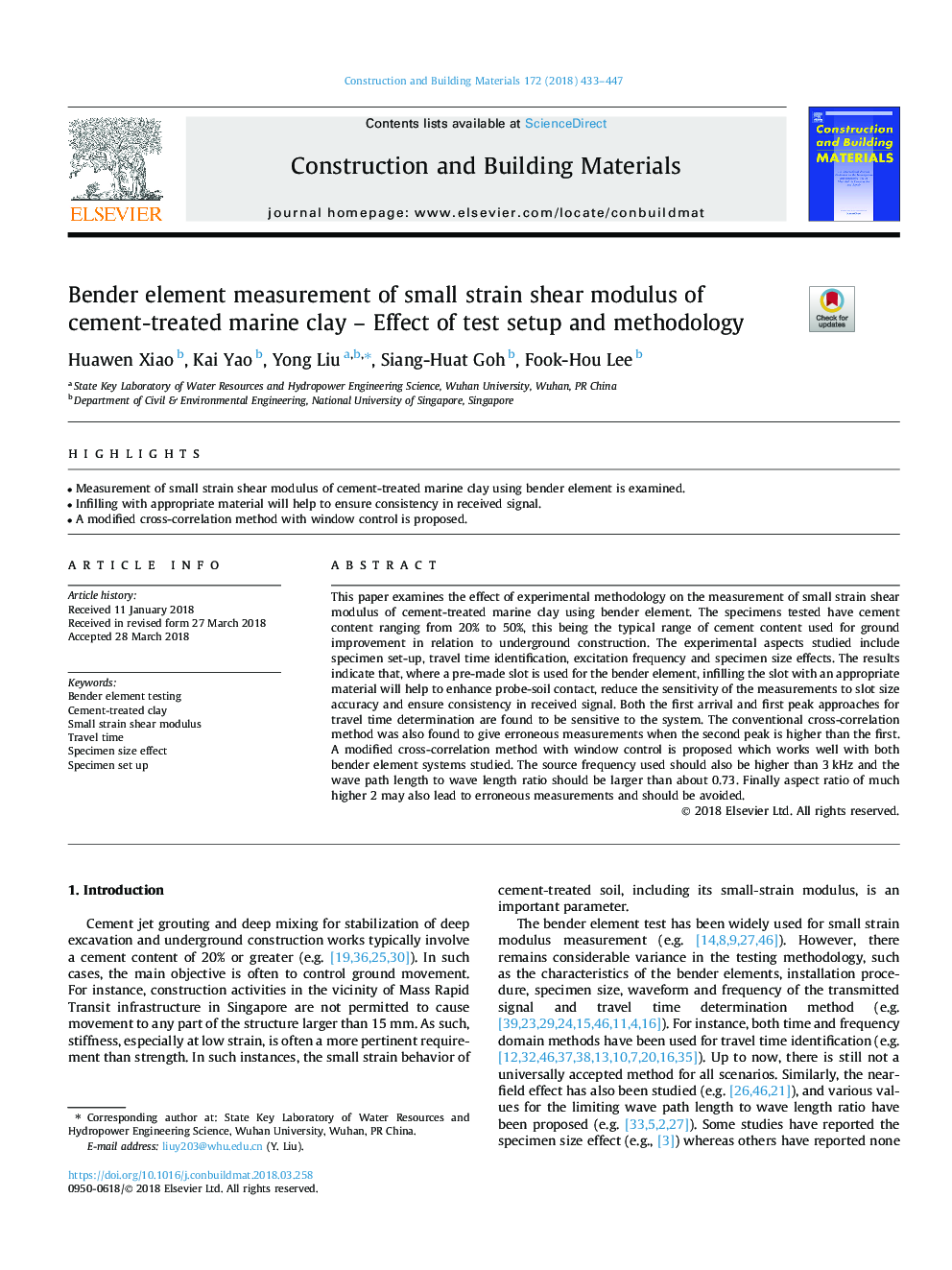| Article ID | Journal | Published Year | Pages | File Type |
|---|---|---|---|---|
| 6713882 | Construction and Building Materials | 2018 | 15 Pages |
Abstract
This paper examines the effect of experimental methodology on the measurement of small strain shear modulus of cement-treated marine clay using bender element. The specimens tested have cement content ranging from 20% to 50%, this being the typical range of cement content used for ground improvement in relation to underground construction. The experimental aspects studied include specimen set-up, travel time identification, excitation frequency and specimen size effects. The results indicate that, where a pre-made slot is used for the bender element, infilling the slot with an appropriate material will help to enhance probe-soil contact, reduce the sensitivity of the measurements to slot size accuracy and ensure consistency in received signal. Both the first arrival and first peak approaches for travel time determination are found to be sensitive to the system. The conventional cross-correlation method was also found to give erroneous measurements when the second peak is higher than the first. A modified cross-correlation method with window control is proposed which works well with both bender element systems studied. The source frequency used should also be higher than 3â¯kHz and the wave path length to wave length ratio should be larger than about 0.73. Finally aspect ratio of much higher 2 may also lead to erroneous measurements and should be avoided.
Related Topics
Physical Sciences and Engineering
Engineering
Civil and Structural Engineering
Authors
Huawen Xiao, Kai Yao, Yong Liu, Siang-Huat Goh, Fook-Hou Lee,
